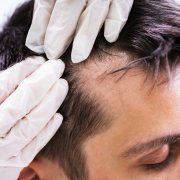Recovery from Hair Transplants
If you suffer from hair loss, hair transplant surgery can be an effective way to enhance your appearance and self-confidence. With advances in hair restoration procedures, it means hair transplant surgery can offer patients permanent and more natural-looking results, with little recovery time required.
Hair loss can be caused by a number of different factors, including genetics, hormones, and aging, as well as conditions such as thyroid disease and alopecia areata. It can be a distressing condition that can lead to low self-esteem, depression, and anxiety.
Are You A Candidate For Hair Transplants?
There are a number of hair restoration options available, and the most suitable option for you will largely depend on your desired results and budget. Hair transplant surgery can be an effective solution for hair loss, although not everyone is a suitable candidate for this procedure. Your hair transplant surgeon will be able to assess whether a hair transplant is suitable for you.
What Does Hair Transplant Surgery Involve?
A hair transplant procedure involves using your natural hair to fill in areas where there is hair loss or thinning. Hair follicles are usually taken from the back and sides of the scalp (where it is more resistant to balding) and are then implanted into the area of hair loss. It is carried out in a precise manner to preserve the appearance of the donor area, maintain the existing healthy hair, and ensure natural-looking results. There are two main types of surgical hair restoration:
Follicular unit excision (FUE) is used for harvesting small, naturally occurring groups (units) of individual hairs for hair transplantation. This method can create natural-looking results that age well and requires short recovery time.
Strip follicular unit transplant (FUT) is a form of transplant that requires a linear strip of hair and tissue to be extracted from the donor region located on the back or side of the patient’s scalp. The strip is then dissected into thousands of tiny follicular units.
Recovery Process
Recovery from a hair transplant procedure is relatively short, and patients typically experience minimal downtime, with many able to return to work within a day or two. The procedure is usually performed in the doctor’s office, and you will go home the same day. The donor site will begin healing almost immediately after the procedure. Sutures will need to be removed approximately 10-14 days following the procedure. The healing phase of hair restoration usually lasts 8-10 months, although you will feel normal and can go about your normal routine within a couple of weeks after the procedure.
Following surgery, swelling will appear during the first week, usually noticeable after 2-4 days. It often affects the forehead, bridge of the nose, and occasionally the eyelids. Swelling is part of the healing process and can be minimized by performing frequent forehead massages and avoiding vigorous exercise for the first 5 days. There may be some numbness in the donor and transplanted areas of the scalp, but this is normal and should resolve within 4-6 months.
During healing, scabbing will form on each transplanted follicle, which will naturally begin to fall off around a week after surgery. You will receive post-surgical hair washing instructions to protect the grafts and encourage the crusts to come off when ready. Avoid picking or scratching the scabs as this will damage the graft and may cause a scalp infection. The crusts may have a hair attached as they fall off, but this is normal, and the follicle root will remain intact in the scalp.
Four Weeks Post-Op
There will be some shedding of transplanted hairs as well as some of the surrounding non-transplanted hair. This is normal and will resolve in the next few months. Regular use of Minoxidil and home-unit laser caps/helmets can help minimize post-operative shedding and should be restarted 2 weeks after your surgery. Any itching, numbness, and redness will improve over the coming weeks as the grafted follicles become established.
You will be able to shampoo and condition your hair as often as you normally did prior to your procedure, and products containing copper peptide are often recommended to promote microcirculation around the transplanted hair follicles.
After Four Months
Follow up appointments should be scheduled at around four months and eight months post-op to assess progress. New hair should be emerging and about 60% of the final density will be visible by 6 months. The healthy follicles will continue to grow hair in a normal, active hair growth cycle, and full hair growth should occur within 12 months.
A follow-up appointment is recommended at around one year after hair transplant surgery to talk about how to protect and maintain your hair restoration investment over the years to come.
Hair Transplant Surgery in Kansas City, Des Moines & Liberty, MO
If you would like to learn more about the different hair restoration options available, schedule a consultation at Darling Hair Restoration. Hair transplant surgeon Dr. Scott Darling will evaluate your condition, make an accurate hair loss diagnosis, and discuss the treatment options that will best meet your needs and expectations. For more information, call us at (816) 792-3400 or you can use our online form to schedule an appointment.










